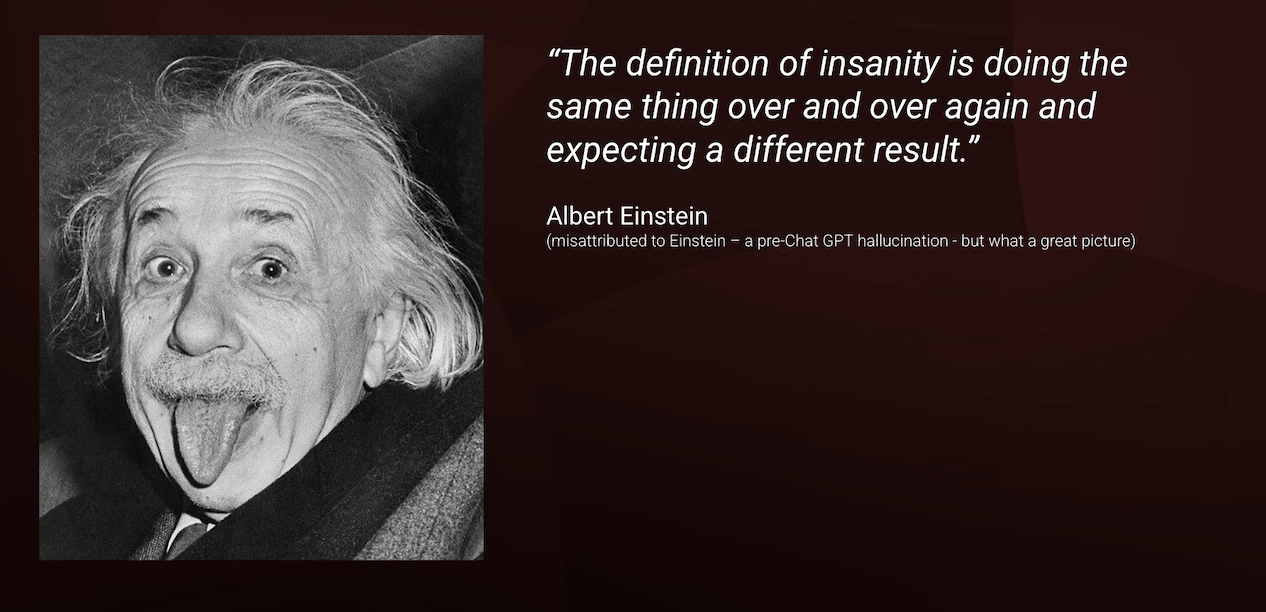You’ve heard the old saying, right? “The definition of insanity is doing the same thing over and over again and expecting a different result.” Commonly misattributed to Albert Einstein, it’s hard to argue with this “hallucination” that predates ChatGPT.

So wouldn’t it be insane to build machines that consistently churn out different answers to the same question?
Yet that’s precisely what we’ve done with generative AI. Ask a commercial large language model or a standard off-the-shelf retrieval augmented generation solution the same question multiple times and there’s a high likelihood that it will respond differently each time.
In the best case, those answers will be different wordings of the same answer. Sometimes, however, and particularly when you are after a very specific answer – say a name, number, or a nuanced fact – even slightly different wordings can lead to wildly different answers, casting a shadow on GenAI’s usefulness in settings that demand rock-solid deterministic accuracy.
The "Insanity" of AI – And How to Fix It
So, what’s going on? Long story short: Generative AI, including LLMs and RAG, relies on probabilistic methods to understand and generate natural language. Think of it as highly educated guesses based on patterns and statistics. But, as you know from your own experience, “probably the right answer” doesn’t cut it when precision is paramount.
That's why David Clarke, Chief Innovation Officer at Squirro, recently tackled this very challenge in our webinar, "Generating Enterprise Knowledge Graphs from Taxonomy and AI"
In it, he presented a robust solution to the problem of probabilistic GenAI outputs: representing enterprise knowledge in a deterministic, machine-readable format using taxonomies, ontologies, and knowledge graphs.
For the webinar, David Clarke was joined by Daniel Loup, a Civil Engineer at Arup, a British multinational firm headquartered in London that provides design, engineering, and advisory services for the built environment. Loup described how Arup is enhancing its building envelopes taxonomy with semantic relationships to create a knowledge graph by mining knowledge from existing documents.
This initiative will enable more effective retrieval, management, and processing of project data and knowledge, ensuring consistent outcomes across diverse regions and projects, and ultimately automating design and reporting processes.
Tune in to discover how taxonomies are breaking free from their traditional role of just structuring knowledge. They're now actively enhancing the accuracy of generative AI outputs and even empowering agentic AI to reason over data, guide critical decisions, and automate actions with newfound precision.
Watch the replay here:
Unlock Advanced GenAI with your Existing Enterprise Taxonomy
The future of AI is clear: it's deterministic, grounded in knowledge, and increasingly autonomous. And because accuracy is a frequent stumbling block for enterprise adoption of generative AI, we've put together an essential educational white paper. It's the perfect complement to our recent webinar, diving deeper into these crucial concepts.
Download your copy today and uncover how taxonomies, ontologies, knowledge graphs, and RAG seamlessly converge to form the ideal foundation for accurate, deterministic enterprise GenAI.









